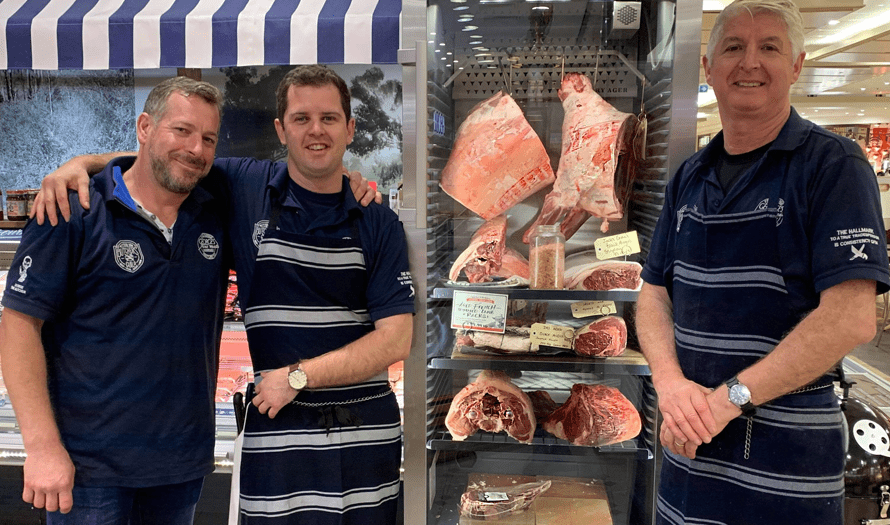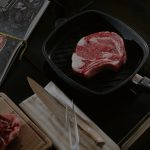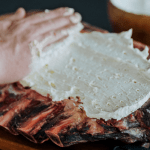Dry Aged Beef – Elite to Special Staple

In this digital age of globalisation, customers have access to more information and options about the food they buy and eat than ever before. This creates a society which places more emphasis on superior quality and specialty foods. Transforming your average buyer into a gourmand, expectant of luxury. Unique ethnic ingredients, sustainable produce and extravagantly indulgent dishes are becoming mainstream.
Furthermore, the increasing popularity of cooking shows like MasterChef or My Kitchen Rules, and the consequent perception of amazing chefs almost as international celebrities, has inspired a new generation of home cooks. People now see the food displayed on such shows as the norm and expect to be able to reproduce this type of food at home.
Dry Aged beef has inspired such a huge trend in the food industry
This presents traditional butcher shops with the dilemma of how to fulfill this new type of demand - to provide products that inspire their customers and remain on trend. One great way to do this is to present a dry aged range.
Dry Aged beef has inspired such a huge trend in the food industry recently. It has become a staple on menus at premium restaurants and steakhouses alike, as a widely acknowledged delicacy. And it’s a trend extending further than fine dining, gaining great momentum amongst home foodies as well.

The process of dry aging is an age-old tradition used to prepare meat. For hundreds of years, butchers left their meat on hooks to mature over long periods, drying out as they age before selling them. Then, with the onset of new technology with barrier packaging, the trend died out. It has since resurfaced at full force, but now combining new technology with an age-old idea.
The concept involves hanging a fresh carcass in a completely climate and temperature-controlled environment. As it ages, the meat loses moisture, to intensify and concentrate the flavour. It also allows the enzymes in the meat to break down muscles tissue and hardened glands, making the meat far more tender and textural.
The result? Meat with that signature luxuriant, dark appearance, where the marbled veins of fat stand out against rich wine-red flesh. Even with a typically lesser quality cut, it becomes meat to die for.
... going back to the roots of meat preparation can be a telling point-of-difference.
The dry ageing process brings out a greater depth and range of flavour for customers to enjoy – and then become obsessed by. Many of these customers try such a steak in a premium restaurant, and dream from then on about recreating it for themselves.
For retail butchers, competing against large, chain supermarkets has never been harder. So, going back to the roots of meat preparation can be a telling point-of-difference. Offering delicious, artisanal meat as well as an aesthetic display feature adds considerable theatricality and credence to a customer’s in-store experience. It also builds your brand as an epicurean, gourmet trader, and allows you to inspire everyday customers to bring new complexity of flavour and sophistication to home cooking.
Explore our recipes for inspiration here
A great example of the difference a Dry Ager can make in a retail butcher’s store is George’s Fine Meats, a specialist butcher in Sydney. Ray Shipley, of George’s Fine Meats, Sydney recently incorporated the Dry Ager in his retail butcher
shop, to showcase the high quality of meat to customers, which ‘needed to be on show, recognised and displayed in its whole primal’, taking customers on a journey of flavour and education of the traditional method of aging meat.
This new demographic of meat connoisseurs prefers the experience of seeing meat displayed…
Ultimately, it was his customers pointing them in the direction of dry aged meat, which inspired them to extend their product range. He believes that consumers are becoming increasingly enthusiastic about the meat they eat, and, paves the way for retail butchers to pass on their
passion and knowledge to customers, introducing them to a new depth of flavour. This new demographic of meat connoisseurs prefers the experience of seeing the meat displayed and will often go one step further to select their preferred cuts, and Ray’s customers are excited to wait until the ageing process is complete to pick their own steak or roast.
‘Customers are very intrigued to know the history and the difference of meat displayed in the cabinet, whether it is grass-fed, or Wagyu, or whether it’s dry age pork.’ Ray commends its elegant design, being a plug and play solution, meant that he could place the meat on the shelves, set the temperature and humidity and leave it to work, knowing that the meat will age flawlessly. ‘Customers are now looking for something different, not just a little piece of steak in a plastic wrap tray’ Ray says, incorporating a Dry Aged range to their shop in Sydney has been phenomenal, and provides a higher element of sophistication to the way meat is appreciated.
For them, a Dry Aging cabinet has been an unqualified success, in terms of brand and product, and it has the same ability to upscale any retail butcher looking for a unique point-of-difference.
Learn more about the Dry Ager® DX Series here
As published in Australian Meat News, November 2019.
You may be interested in:

Dry Ager goodness, delivered fortnightly.
Join the meat press
Copyright © 2025 Dry Ager Australia & NZ
Website by SILVERLANE™
CONTACT US
Distributor for Australia & NZ
e: sales@dryager.com.au
p: 1300 113 115
Opening Hours
Monday to Friday 8am - 4:30pm




